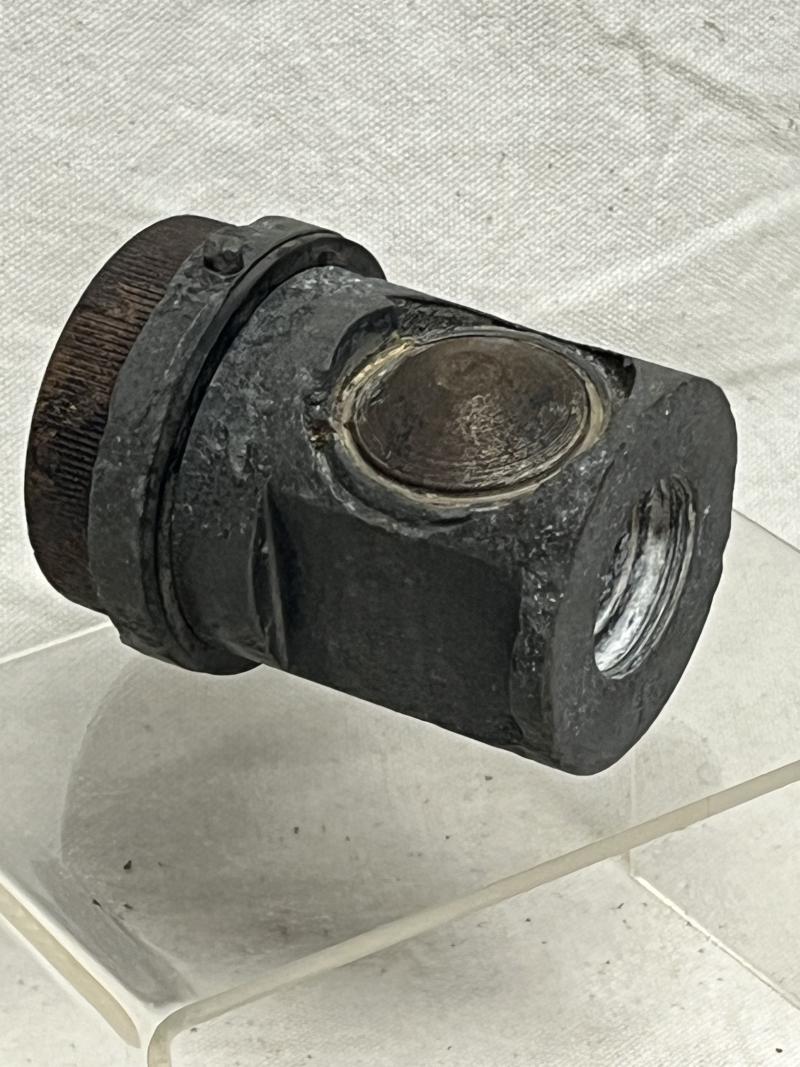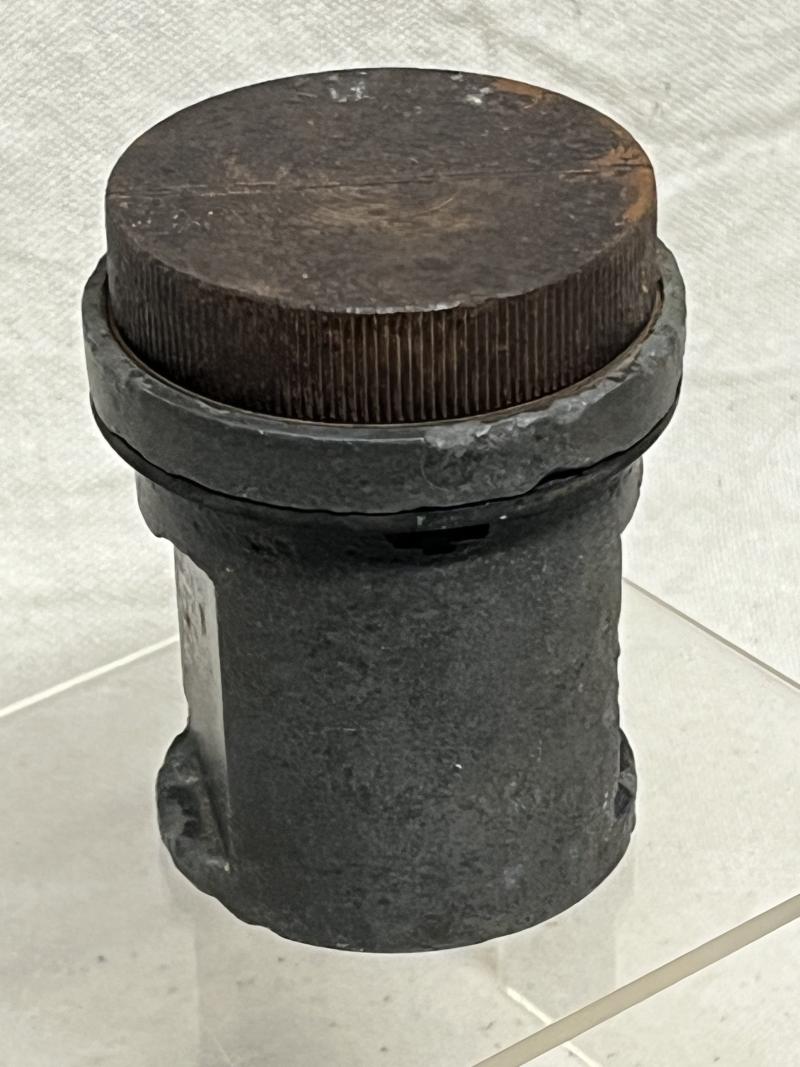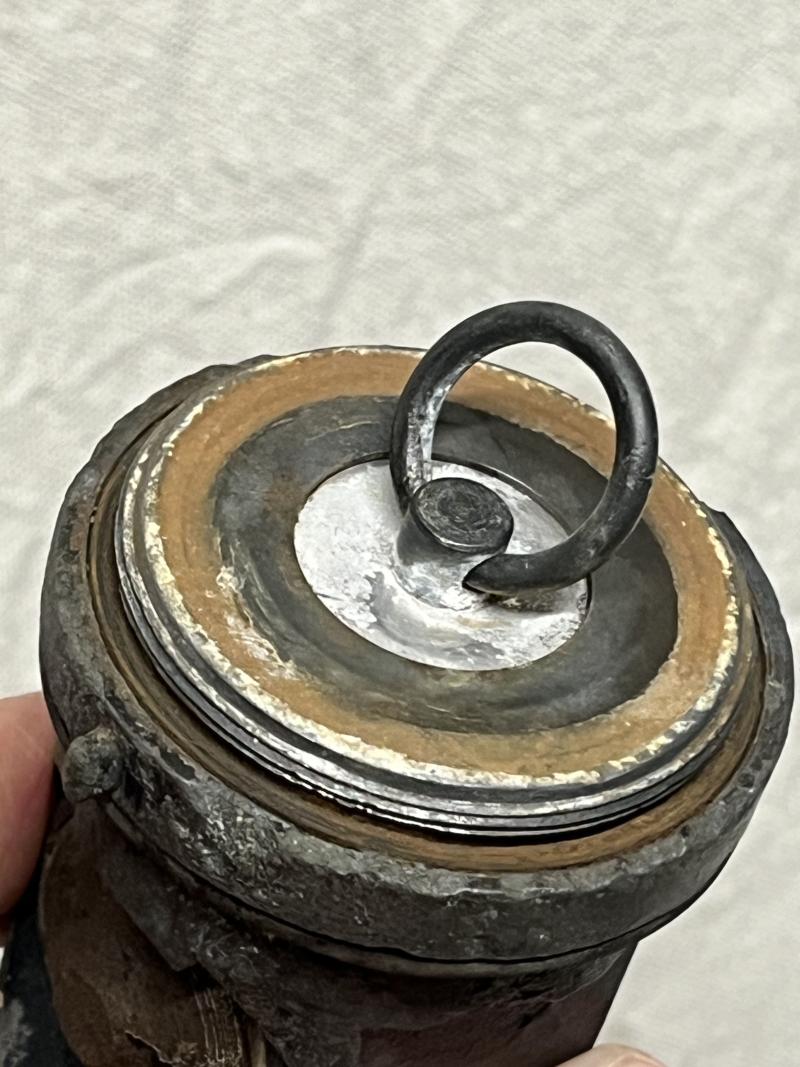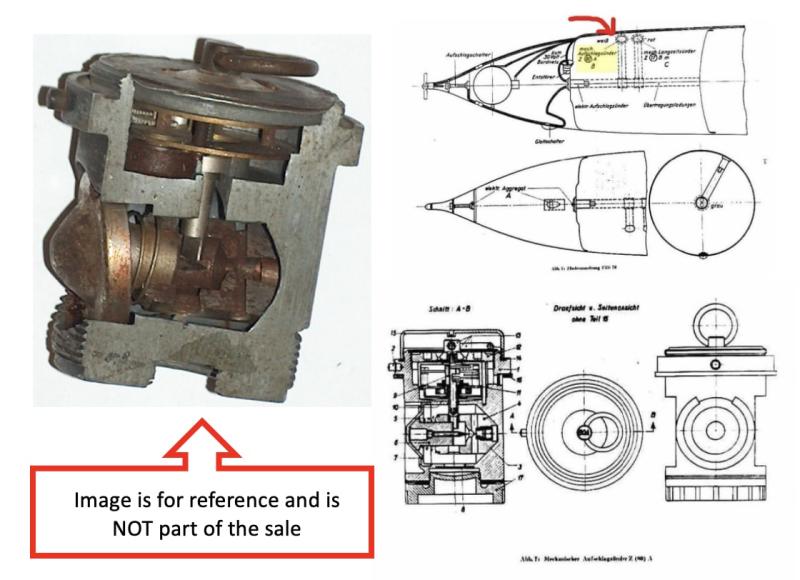WW2 German, V1 (‘Buzz Bomb’ / ‘Doodle Bug’), VZ80(A), Mechanical Impact, "All-Ways", Action Fuse.
Was £400, Summer sale, £352, NOW £295
OPERATION:
When the bomb was launched, the arming ring of the fuse was pulled, removing the central part of the aluminium diaphragm and a spiralled arming wire. The removal of the latter released a lever which freed the balance wheel of the clock and allowed the clock to begin operating. After approx. 7 minutes, the arm holding down the arming bolt sprung to one side, and the arming detent was forced out by its spring, the fuse then fully armed.
HISTORY:
The V1 Flying Bomb, also known as a 'buzz bomb' or 'doodlebug', was one of the most fear-inducing terror weapons of the Second World War. In the face of relentless Allied bombing of German cities, Hitler created its 'revenge weapons' (Vergeltungswaffen) in an attempt to terrorise British civilians and undermine morale.
Powered by a simple but noisy pulsejet, more than 20,000 were launched at British and continental targets, mostly London and Antwerp, from June 1944 to March 1945. It carried a one-ton, high-explosive warhead and had a range of about 240 km (150 miles) but was, however, very inaccurate. At the impact site houses or buildings were totally demolished and destroyed. In the inner London suburbs where terrace houses were packed together, sometimes up to 20 houses would totally collapse, just at one hit. Brick walls were pulverised into small fragments.
Further out from the epicentre walls, roofs and window frames were ripped out exposing the contents and innards of the house. Further out still, all the windows were blown out and roofing slates blown off. Every time a Doodlebug landed hundreds of houses were damaged. Ranging from total demolition to minor damage. This was a freezing, drenched summer and repairs would take several months. Londoners were de-housed in their tens of thousands or shivered in cold, damp and roofless houses. The blast area of a V1 extended across a radius of 400 -600 yards in each direction.
Anyone unlucky enough to be close to the impact site would be blown apart or suffer crush injuries from falling masonry. Others would be trapped below collapsed buildings and have to be dug out. Further away from the impact site awful injuries were inflicted by shards of flying glass.
During the course of the attacks the nature of the injuries changed somewhat. At the beginning people were caught unawares on the street and injuries from flying glass were widespread. Later on, people had understood the necessity of shelter in safe (er) areas of their home e.g. under the stairs. However, this had the effect of less flying glass injuries but more crush injuries from people being buried in the ruins of collapsed houses.
The toll of human suffering was appx. 6184 people killed by V1’s and 17981 seriously injured and maimed. Tens of thousands of others received lesser injuries. Countless more would suffer the pain of bereavement or from the loss of their home and treasured possessions.
Please refer to the photographs carefully as they form part of the description, priced to reflect the rarity.
Left for the purchaser to display as they wish!!
Code: 428










